Just a quick picture of some very nice pencils sent to me by blog reader Steve:
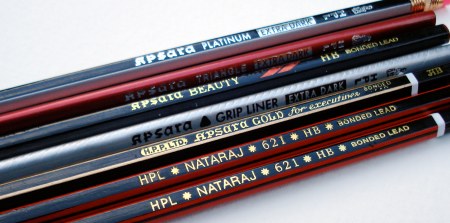

pencil talk | pencil reviews and discussion
exploring the art and science of pencils since 2005
Just a quick picture of some very nice pencils sent to me by blog reader Steve:

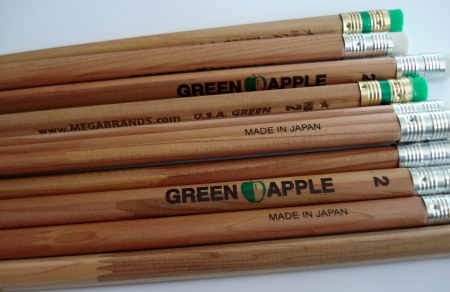
My first blogging injury.
pencil talk reader Joshua kindly sent me some Mega Brands SRX pencils. Mega Brands has been mentioned here before as the owner of the RoseArt brand, which is a longtime U.S. pencil manufacturer.

They now have some pencils in the Mega Brands name, with RoseArt unmentioned. One of these is the “USA Green”, presumably an extension of their “USA Gold”.
The pencil package states:
USA Green is an earth friendly cedar wood pencil with a high quality graphite core.
The package also notes that the pencil has neither lacquer nor foil stamping. It is made in the U.S.
I was using one, testing it out, when I noticed something extremely unusual – the pencil appeared to be made from four pieces of wood – not the traditional two. Other pencils were made from six pieces of wood.

Coincidentally, I came across a similar pencil a day later at a local bookstore. Made in Japan, this was a very nice looking triangular pencil sold by “Green Apple school supply”.
It similarly was made of multiple pieces of wood – and this was acknowledged on the package. Here is what they say:
Green Apple #2 graphite pencils are made using scrap wood and finger joint construction.
There is the descriptive phrase we need – “finger joint construction”.
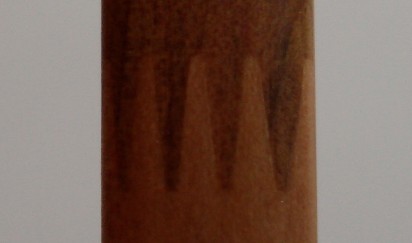
To get a better view of what was going on, I tried to split one apart – and got a rough splinter in my finger – my first blogging injury. Luckily not my writing hand. I didn’t learn too much from this interrogation.

Maybe someone with some wood working knowledge could share some information about what’s going on. I’m not sure if this constitutes a new pencil production technique, but it is certainly very interesting.
It appears that the pencils are made (as usual) from pencil slats, but that the slats have been constructed via this finger joint process.
In any case, if this technique is part of a new strategy to compete with the rolled newspaper pencils, I can see it having some appeal.
We’ll look at some other Mega Brands SRX pencils in the days ahead.
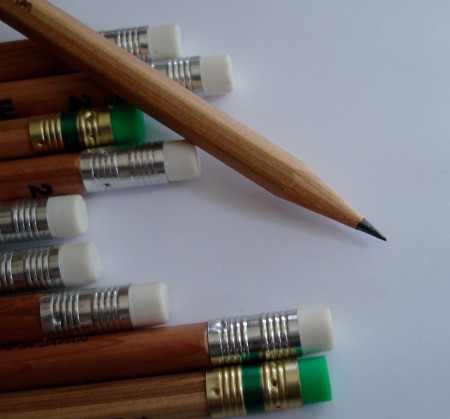
As pencils, both have merits. The Green Apple does have a very nice triangular shape and finish, while the USA Green gets a nod for a quite smooth rich lead, especially for what would appear to be a discount pencil at first glance.
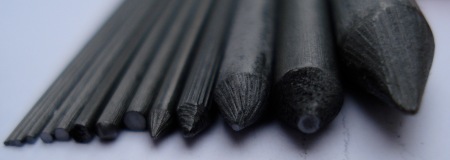
Photo (L-R): Leads in 0.2mm, 0.3mm, 0.4mm, 0.5mm, 0.7mm, 0.9mm, 1.18mm, 1.3mm, 1.4mm, 1.5mm, 2.0mm, 3.15mm, 3.8mm, and 5.6mm diameters
Mechanical pencil users have a lot of choice in lead diameters. Between thin leads used for drafting and wide leads used for sketching, most of us should be able to find something suitable.
0.2mm
That’s not a typo! Introduced by Pentel in 1973, the 0.2mm lead is used by the PG2 (or PG2-AD) Pentel pencil. It is extremely thin. Refilling a pencil with this lead is not unlike threading a needle. While I expected this diameter to be essentially unusable, I didn’t find any problems in practice. I’ll give some credit to Pentel here – it seems almost impossible to me that this lead wouldn’t continually break, but it didn’t.
0.3mm
For drafting, this is the thinnest lead made by a variety of manufacturers.
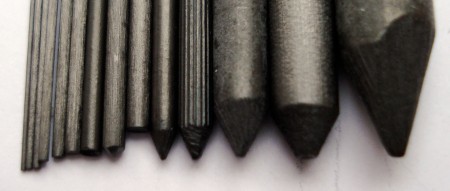
0.4mm
Also for drafting, this diameter is a Japanese specialty. Some ranges of drafting pencils are sold with this width in Japan, and without elsewhere.
0.5mm
The thinnest writing and general use diameter, it is also used for drafting.
0.7mm
A larger diameter also for writing and general use, as well as drafting.
0.9mm
Introduced in 1960, this was once the “standard” thin lead pencil diameter.
Today, it is used for drafting and a few general use pencils.
1.18mm
Prior to the 1960s, the standard lead diameter. Still used by Yard-O-Led, and a few others, including some companies that didn’t exist when this diameter was the norm!
1.3mm
Pentel and some other Japanese manufacturers have made light use of the 1.3mm diameter, and Staedtler recently introduced a pencil in the category.
1.4mm
The Faber-Castell Emotion was the only pencil using 1.4mm lead until Lamy changed their ABC from 3.15mm to 1.4mm. Still, an unusual lead.
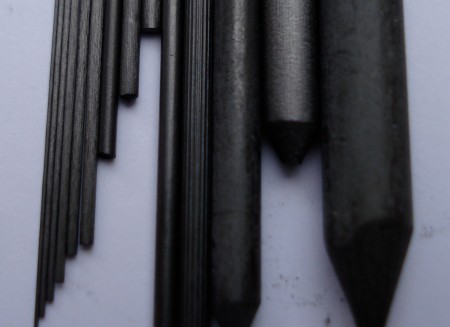
1.5mm
The lead shown is a historical variant. (This example from Faber-Castell.) Fedra and others once made 1.5mm leadholders, but I’ve not been able to find one.
1.6mm
(Not Shown.) One of two in production diameters that I’m aware of that aren’t shown here. Faber-Castell Brazil makes 1.6mm pencils. (Brazil is also where the 1.4mm leads are made.)
2.0mm
The diameter of the lead in a standard woodcase pencil, 2.0mm is the beginning of ‘wide’ rather than ‘thin’ lead in many definitions. The standard for many drafting clutch leadholders made around the world, and carried in ‘big box’ stores, it is possibly the most available lead width apart from 0.5mm and 0.7mm.
2.5mm
(Not Shown.) Koh-I-Noor is the only modern manufacturer of this lead that I am aware of.
3.15mm
The outer realm of drafting lead diameters, this lead is today mainly used for sketching, though some drafting-syle clutch leadholders are still sold. The quite amazing Lamy Scribble introduced many of us to this format.
3.8mm
Used by Pilot, Caran d’Ache, and Koh-I-Noor, this diameter is also inside many art pencils (graphite, colour, and other). Strictly for drawing.
5.6mm
The largest standard lead that will be found in an art supply store, there are 5.45mm and 5.5mm subvariants. Very useful for sketching, pencils in this diameter continue to have a market.
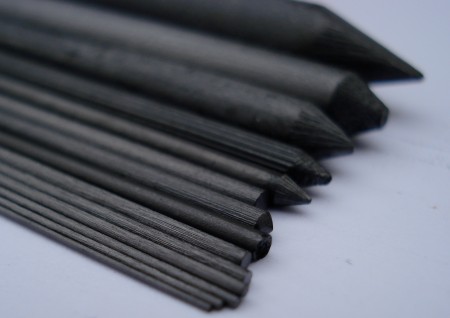
There are a number of historic diameters not mentioned, but I think this list is correct at present. Let me know if I’ve missed something!
So, which lead diameter do you use?
An interesting article in the Salina Journal (Salina, Kansas) discusses some of the back to school supply routines in their community. Mechanical pencils, woodcase pencils, and specific brands may be required depending on the school.
Link: Making the list

Here are a couple of oversize pencils from Dixon – the Laddie and Beginners.
The Beginners in particular seems to make people laugh when they see it. There is definitely something amusing about it. It looks just like a regular Ticonderoga, except that it is round and almost twice the diameter. The Laddie is somewhere between the regular and Beginners pencils.
Where there is a Laddie, there is often a Lassie, but I couldn’t find that brand offered.
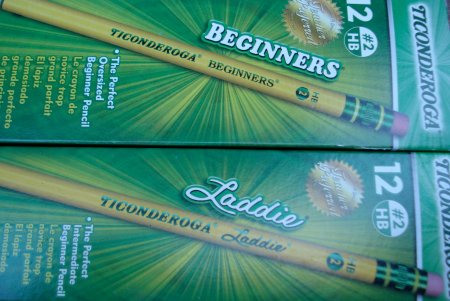
The Beginners box says, “The Perfect Oversized Beginner Pencil”, while the Laddie claims to be “The Perfect Intermediate Beginner Pencil.”
The boxes also have a faux seal stating “Teacher Preferred”.
A ring with smaller text states, “Tradition & Quality Since 1795.”
Not in pencils of course – Dixon was making stove polish and crucibles back than. This mention of the company’s year of origin strikes me as just a bit curious.
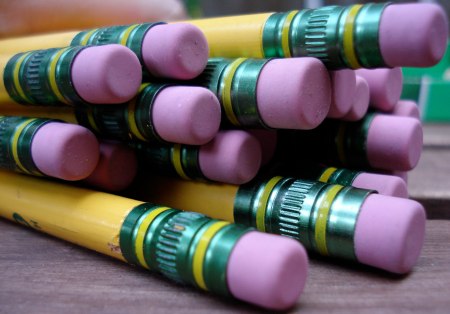
The boxes indicate the pencils are made in Mexico.
They sharpen easily, but the lead seems not to match that of modern Ticonderogas, and is somewhat scratchier in my testing. That’s too bad, as these pencils won’t be offering the best experience for the children who use them.

Nearing the end of an ongoing series on the pencils of Korea, today we’ll look at the Munhwa Deojon hi-mic pencil.
Along with Dong-A and Hankook Sharp, Munhwa is an established Korean pencil manufacturer.
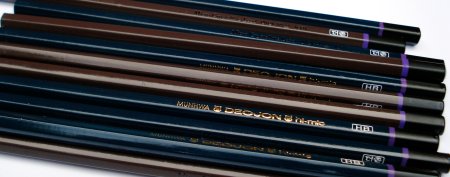
A box of twelve pencils has an unusual silver and purple design, with a classical musical instrument used as a symbol. A five-stringed harp?
The back of the box says, “Micro crystalline lead made by Munhwa in Korea.”
The pencils themselves are a mix of green and brown, with gold lettering, and purple and black cap.
The pencils read:
Obverse: Munhwa Deojon hi-mic HB
Reverse: Micro Crystalline Lead [Further text in Korean]
Sorry, I’m not able to offer a translation of the Korean text.
The pencils are also stamped “0708 Marco China”. Hmm, it suggests the pencils are made in China, with Korean lead cores.

And what lead cores they are. The Deojon makes a very smooth, rich, dark line – the nicest we’ve seen from a Korean pencil, and very high quality by general standards.
Definitely worth trying if you come across them!